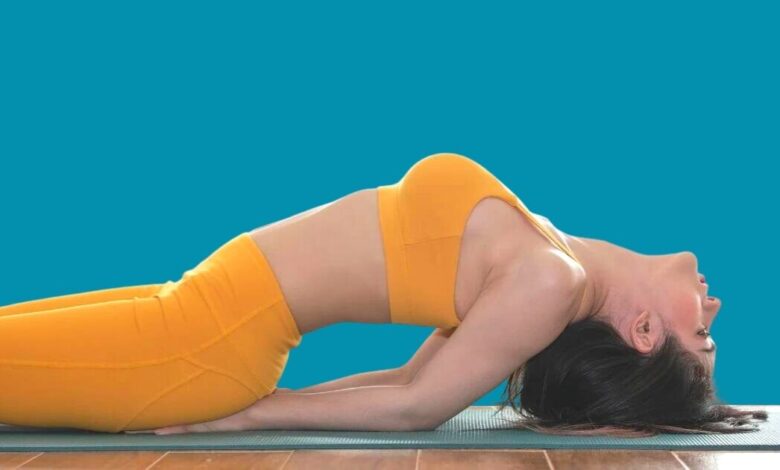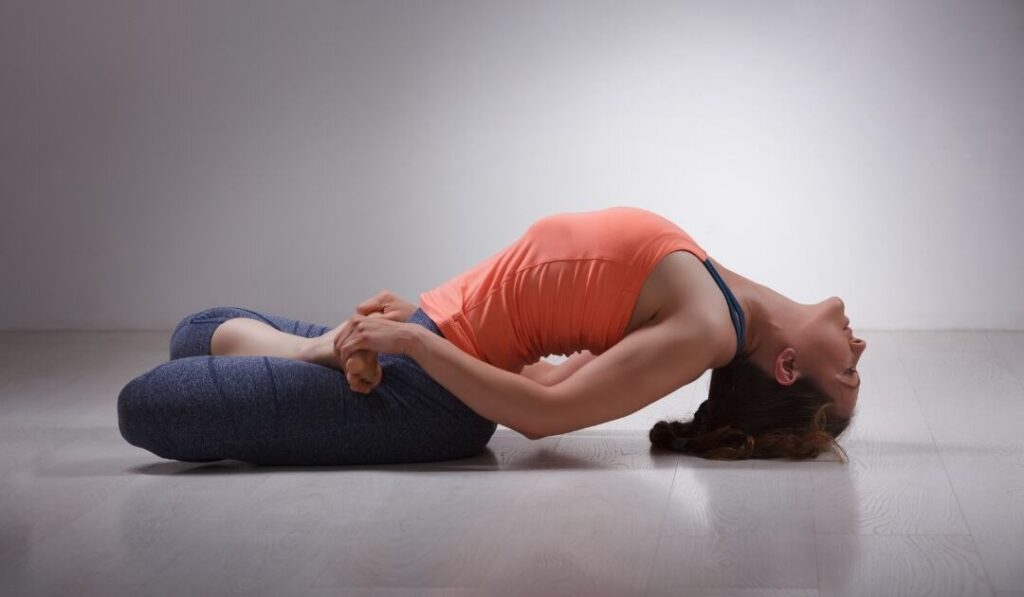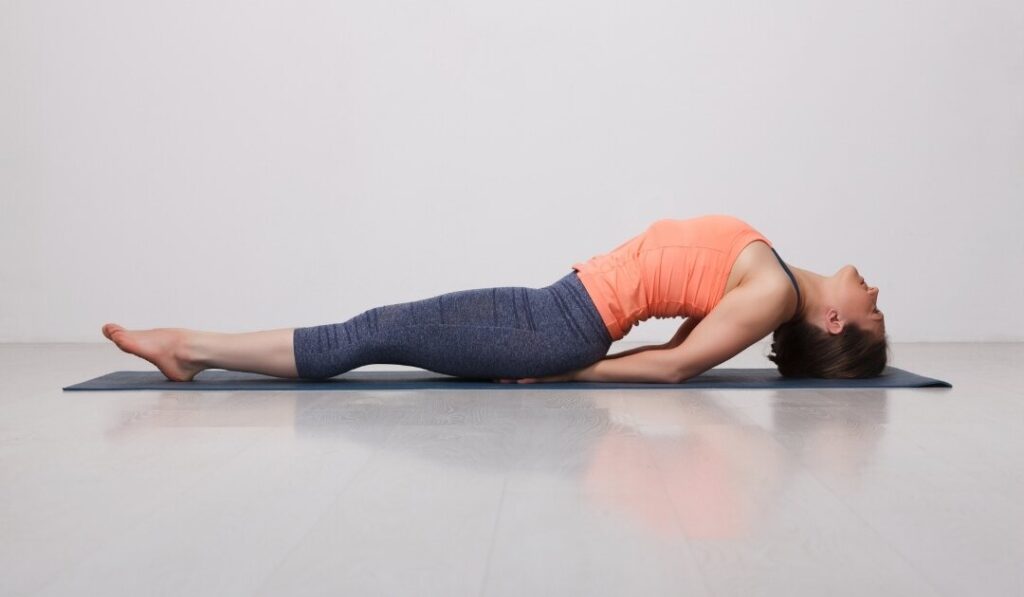
Matsyasana or the Fish Pose is a yoga asana of medieval times. It is described in the Gheranda Samhita and also can be found mentioned in the Hatha Yoga Pradipika.
This asana is a reclined backward bending type yoga with or without positioning the legs in Lotus Posture. It is one of the counters or follow-up poses to Sarvangasana or Shoulder Stand Pose.
Matsyasana Meaning
This pose gets its name from two Sanskrit words: Matsya, meaning fish, and Asana, meaning posture.
The legs forming Lotus Posture in Matsyasana resemble a fish’s tail while the rest of the body resembles a fish’s body and head. It also enables one to float in water.
| Sanskrit | Matsyasana (मत्स्यासन) |
| English | Fish Pose |
| Pronunciation | mot-see-AHS-anna |
| Matsya | Fish |
| Asana | Pose |
Precautions & Considerations
It is advisable to consult your doctor or a yoga expert before you begin any asana.
- People with knee or spinal injury or ailment should avoid this asana.
- Similarly, those suffering from high or low blood pressure, cardiovascular disease, or insomnia should not practice matsyasana.
- It is also not advisable for pregnant women to perform the Fish Pose yoga.

Matsyasana Steps
Below are the steps to practice matsyasana:
- Relax your body in Lotus Posture. Take a couple of slow and deep breaths.
- Then, slowly bend your body back, carefully placing your elbows and forearms on the floor. Keep your legs in Lotus Posture.
- Taking the support of elbows and forearms, lift your chest a little upward and place the crown of your head on the floor.
- Now, Arch your back to the maximum comfortable extent. Hold on the big toes with your elbows touching the floor.
- Breathe slowly. Hold this position as long as it is comfortable.
- Exhale and reverse the movements gradually to release the posture and relax in Lotus Pose for a few seconds.
- Repeat the above steps on the opposite side by interchanging the position of legs in the Lotus Pose.
Follow Up Poses
No follow-up pose is required if the Fish Pose is performed after a forward bending posture like Sarvangasana.
However, if a forwarding bending posture did not precede it, you can perform one of the following as a follow-up pose.
- Shoulder Stand Pose
- Halasana Pose
Matsyasana Variation
There is a more accessible version of this pose wherein the legs are kept stretched and straight instead of Lotus Pose (refer image below). This version is also equally effective and provides most of the benefits of the full version.

However, to make this pose more challenging, one can slide their hands out from underneath their buttocks and bring them into Anjali Mudra.
Matsyasana Benefits
Some of the benefits of the Matsyasana are as follows:
- Increased blood circulation to the pelvic region in this asana improves the functions of the reproductive organs.
- The regular practice of this posture also helps in conditions like disorders of menopause and periods.
- The Fish Pose tones the lung muscles and improves lung function. Hence it is a good yoga for disorders like Asthma and Bronchitis.
- It stretches the abdominal organs and muscles. Hence its regular practice reduces constipation, indigestion, and hemorrhoids.
Other suggested asanas:
- Vrikshasana ( a.k.a Tree Pose)
- Siddhasana (The Accomplished Pose)